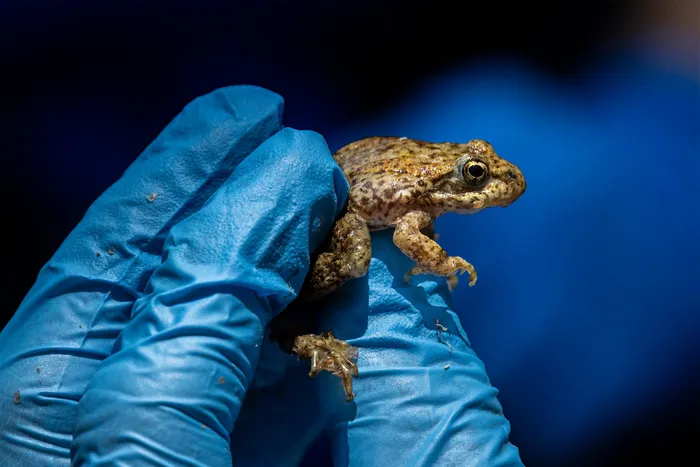Zoos bid to save endangered frogs from extinction

Mountain yellow-legged frogs are classified as endangered on the International Union for Conservation of Nature Red List of Threatened Species. Picture: Ken Bohn/San Diego Zoo Wildlife Alliance
More than 70 endangered mountain yellow-legged frogs have been reintroduced into a lake in the San Bernardino Mountains thanks to a collaboration between the San Diego Zoo Wildlife Alliance and Omaha’s Henry Doorly Zoo and Aquarium.
The release marks the first time the Southern California population of the mountain yellow-legged frog has been reintroduced into a lake instead of a mountain stream. The frogs were bred at San Diego Zoo Wildlife Alliance’s Beckman Centre for Conservation Research from 2020 and 2022, and then reared at the Henry Doorly Zoo and Aquarium.
The cross-country effort to save the California frog is part of a conservation breeding and reintroduction research programme aimed at restoring populations of this declining species throughout its historic range.
“We have the unique ability to act as a remote head-start facility for the conservation recovery team and are committed to helping conserve these frogs,” said Derek Benson, amphibian conservation researcher and lead keeper, at the Omaha zoo.
“We are thrilled to be part of the return of these animals to a historic site as the population rebounds.”
The frogs were released in two groups. The first arrived from Omaha on the day of their release and were placed in a protective habitat at the lake for seven days so they could adjust to their new surroundings. The team performed daily health checks on the frogs and fed them a variety of insects, including those collected from their environment.
The second group arrived the following week and were released into the lake alongside the initial group.
Researchers are evaluating the release techniques, along with several other factors, to better understand which combination of reintroduction strategies will prove most beneficial for the mountain yellow-legged frogs’ survival.
The frogs are microchipped for identification, and the wildlife alliance continues to conduct post-reintroduction surveys at the lake to monitor their success in the habitat.
“Lakes have the advantage of more permanent water that is less likely to dry up in a drought,” said Debra Shier of the San Diego Zoo Wildlife Alliance.
“When water habitats like streams do begin to lose water, adult frogs may be able to move, but tadpoles can’t. It’s important that we’re identifying and preserving suitable habitats in the mountain yellow-legged frogs’ native range that can hopefully prove hospitable for this species for years to come, despite the increasing pressures brought on by climate change.”
Classified as endangered on the International Union for Conservation of Nature Red List of Threatened Species, severe population fragmentation has led to estimates of fewer than 200 adult mountain yellow-legged frogs remaining in their native habitats.

The mountain yellow-legged frog is facing many threats to its survival, including disease, introduced predators, wildfires and drought driven by climate change.
Breeding programmes for species facing an uncertain future in their native habitats are critical for recovery.
The wildlife alliance and its partners, including US Fish and Wildlife Service and US Geological Survey, are working to manage and propagate this species as part of a full-scale conservation breeding and reintroduction research programme.
The programme began in 2006 as a salvage effort, but has evolved to include genetic diversity management, disease management, assisted reproductive technologies, behavioural studies, field surveys and statistical analyses.
Teams take a rigorous, scientific approach to enhance breeding and reintroduction efforts for this species.
To date, the San Diego Zoo Wildlife Alliance has bred and reintroduced thousands of frogs back into mountain habitats and monitored their success.
Cape Times
Related Topics: